

New Orleans was the first home of the American Mafia. Crime family roots in the community predate the start of the U.S. Civil War. For much of its history, the New Orleans Mafia isolated itself from most underworld organizations in the rest of the country and maintained a cooperative relationship with local government. The isolation may stem from historic friction between Palermo, Sicily, Mafia authority and the rebellious Monreale-based Stuppagghieri group that took hold in the Crescent City in the 1880s. (Until the post-Castellammarese War restructuring of the American Mafia in 1931, many U.S. Mafia units functioned as branch offices of criminal fraternities in Sicilian home cities.) In its early organized crime history, the Crescent City experienced a lengthy war between Palermo and non-Palermo Mafias. The conflict evolved into the Provenzano-Matranga feud, and it grew to include the 1890 assassination of local Police Chief David Hennessy and the 1891 lynching of Italian-American prisoners at Orleans Parish Prison. The New Orleans Mafia colonized other areas of the U.S., including the western coast of Florida, the Galveston-Houston and Dallas areas of Texas, southern Colorado, southern California and eastern Missouri. Descendants of a New Orleans Mafioso managed for a time to dominate the underworld of Pittsburgh, Pennsylvania.
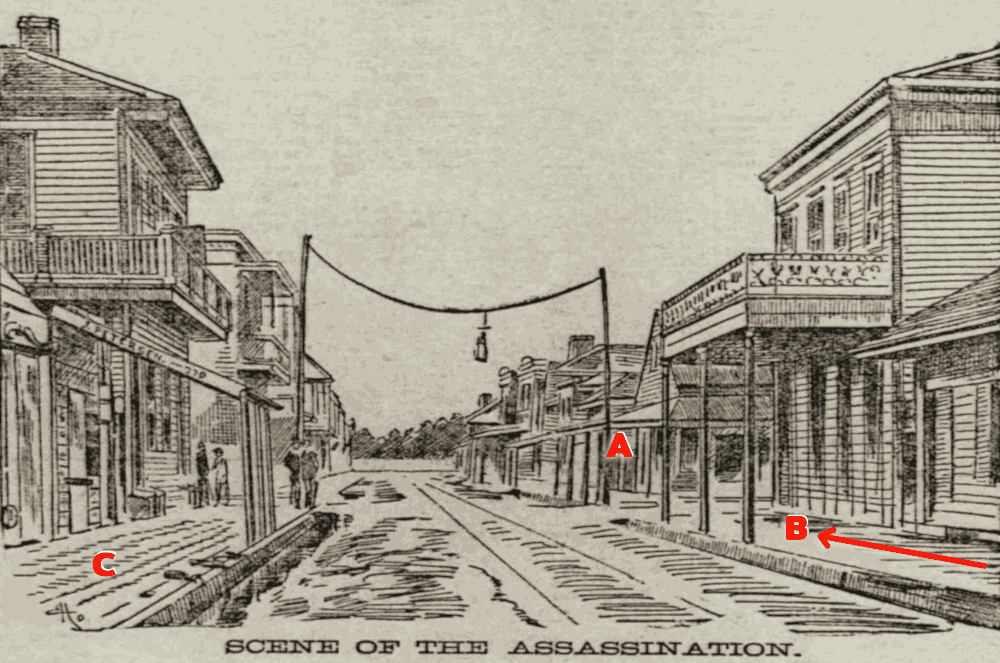
1890 murder of police chief Hennessy. A - Fence in front of Chief Hennessy's house. (The house was set back from the street.) B- Point where Hennessy was shot. C- Point from which the first volley was fired. (New Orleans Times-Democrat, March 13, 1891.)
1860 - Raffaele Agnello (1830 to April 1, 1869). Descended from Palermo aristocrats, Raffaele Agnello was a leading figure in New Orleans' small colony of Palermitani. Events of the U.S. Civil War allowed Agnello to project his power beyond Little Palermo into the immigrant homes and businesses along the city levee. As New Orleans was approached by Union forces, the Confederate Army units retreated from the city, taking government officials and law enforcement officers with them. Agnello was a leader in the "Italian Guards Battalion" left behind to maintain order in the "French Quarter" and along the docks. The battalion was regarded as a nonbelligerent foreign entity. During the Union occupation of the city, the military contied to rely upon the Italian Guards.
1868 - Following the War, Raffaele Agnello instigated a conflict with Sicilian gangs that were not part of his Palermo Mafia. His actions caused gangsters in the Messina and Trapani (colonies in New Orleans to unite against him. Agnello appears also to have been opposed by influential produce merchant Joseph Macheca and a radical Mafia organization linked to the Stuppagghieri crime fraternity of Monreale and Piana dei Greci (now known as Piana degli Albanesi) in Sicily.
1869 - A series of successful attacks against the Messina-Trapani gangs caused their leaders to temporarily flee New Orleans and regroup in the Galveston, Texas, area. Believing he had won his feud, Raffaele Agnello and his bodyguard Frank Sacarro went for a stroll through the Sicilian community on April 1, 1869. Sacarro was distracted for a moment as the two men reached the front of Joseph Macheca's produce store. In that moment, a gunman appeared and fired a blunderbuss pistol at close range into Agnello's head. Sacarro drew a firearm and shot at the gunman, but he escaped through a nearby shop. The Palermo Mafia boss was dead.
"America's first Mafia war: New Orleans, 1868-1972"
Writers of Wrongs: "Vendetta killings at New Orleans' French Market"
Writers of Wrongs: "New Orleans underworld boss murdered"
Writers of Wrongs: "On this date in 1868 - New Orleans gangland murder"
1869 - Joseph Agnello (1833 to April 20, 1872). With the murder of Raffaele Agnello, leadership of the Palermo Mafia organization in New Orleans fell to his brother Joseph. Joseph Agnello continued the war against the non-Palermo gangsters in the city and conducted a successful ambush of a number of their leaders. The war continued, however.
1872 - Adversaries repeatedly ambushed Joseph Agnello and succeeded in delivering serious wounds, but the Palermo boss miraculously recovered each time. Until April 20, 1872. On that day, opposition gunmen cornered him aboard the moored schooner Mischief and fired shotgun blasts through his midsection.
Writers of Wrongs: "The murder of New Orleans boss Joseph Agnello"
1872 - Mateo Minafo (1836 to July 15, 1872). Following death of Joseph Agnello, representatives of the Messina-Trapani faction informed the local press that only one man stood in the way of their complete victory. That was Mateo Minafo. Gang bullets would not have a chance to get to Minafo. Three months after Agnello's murder, the thirty-six-year-old Minafo died at his home on Royal Street of an affliction doctors called "congestion of the brain." The Provenzano family appears may have moved into a prominent position within the traditional Mafia of New Orleans at this point, but the organization remained invisible until about 1879.
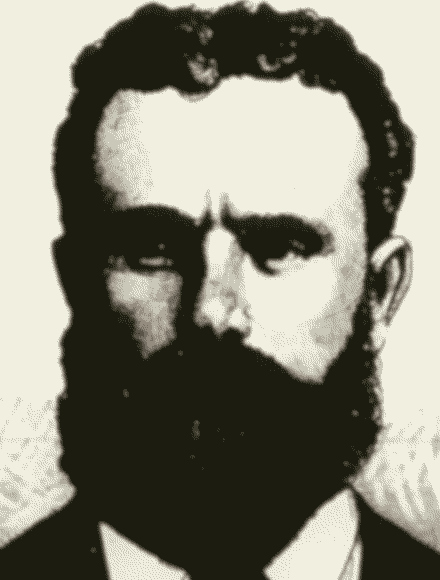
Esposito
1879 - Giuseppe Esposito. Sicilian bandit and murderer (also known as Randazzo and believed to be a former lieutenant in the brigand band led by Antonino Leone) Giuseppe Esposito escaped from authorities in Palermo on his way to trial. Using connections with Sicilian Mafiosi and businessmen on both sides of the Atlantic, Esposito traveled to New Orleans through New York. Upon his arrival in the Crescent City, he was looked upon as a Palermo Mafia authority and was given control over the New Orleans underworld. Esposito, hiding behind false identities in his new city, revived the traditional Mafia faction by supporting Provenzano family domination over New Orleans dock rackets.
1881 - Esposito was betrayed to the authorities. News of the wanted bandit's location reached private investigators working with the Italian government. Esposito was arrested by cousins David and Mike Hennessy and transported to New York City. After hearings before a federal commissioner, in which Esposito brought forward witnesses from New Orleans who testified uncovincingly that he was "Vincenzo Rebello," the bandit was deported to Italy.
Writers of Wrongs: "Hennessys capture Sicilian brigand in New Orleans"
1881 - Joseph Provenzano. The Provenzano clan, made wealthy and powerful by their tight control of the employment at the New Orleans produce docks, momentarily became the greatest force in the local underworld.
1885 - The Provenzano family lost control of the produce docks to the Matranga family. Produce importers, led by Joseph Macheca, contracted with a Matranga-Locascio firm to provide labor for the unloading of their merchant vessels. Deprived of their income and influence, the Provenzanos fought a losing battle in the Cresent City underworld from that point on.
1891 - The Orleans Parish Prison lynchings resulted in the deaths of Joseph Macheca and other Italian-Americans accused of participating in the murder of Police Chief Hennessy but left intact the leadership of the Matranga Mafia. The Matranga organization emerged as a quiet partner of vice-tolerant local government. The Provenzano clan ceased to be a major force in the New Orleans underworld.
Writers of Wrongs: "New Orleans killing linked to Mafia feud"
1875 - Salvatore Marino (c. 1838 to Sept. 29, 1878). Salvatore Marino and Salvatore Matranga established a branch of the Stuppagghieri ("Stoppers") Mafia in New Orleans. The highly secret organization based in the Monreale-Piana dei Greci (Piana degli Albanesi) area conducted a guerilla war on both sides of the Atlantic against more conservative Giardinieri ("Gardeners"). In the conflict, each side cooperated with friendly elements in law enforcement.
1878 - Salvatore Marino died of Yellow Fever in New Orleans in September of 1878. Near death, he provided information on the Stuppagghieri to a trusted subordinate, who later turned that information over to law enforcement.
1878 - Salvatore Matranga (1818 to c. 1895). Following the death of Marino, Matranga assumed sole leadership of the underworld Stuppagghieri in New Orleans. He brought his two sons, Antonino and Carlo, into the Stuppagghieri society. Antonino reportedly had little interest in underworld leadership, satisfied with his private alcohol and gambling enterprises.
1879 - Giuseppe Esposito (see above). The Stuppagghieri faded into the background during Esposito's term as underworld leader in New Orleans. Esposito's connections with Palermo underworld leaders and businessmen and his reputation as a fierce Sicilian brigand likely kept Mafia factions in line. It appears likely that an individual from within Matranga's group alerted the Italian authorities to Esposito's presence in the Crescent City.
1881 - The arrest and deportation of Giuseppe Esposito triggered conflict between the Provenzano and Matranga factions.
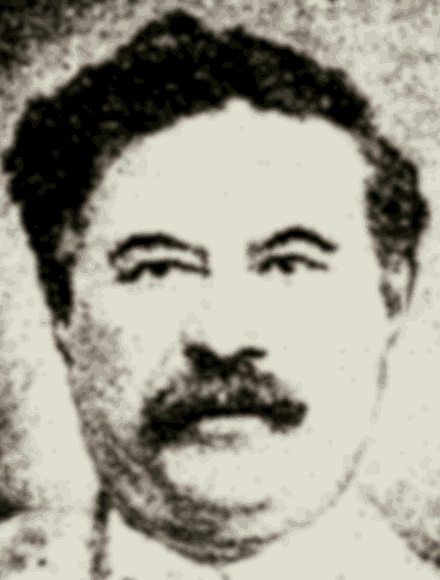
Matranga
1881 - Charles Matranga (November 1857 to Oct. 28, 1943). Matranga's Stuppagghieri splintered off from the Provenzano organization after Esposito was deported. Matranga's group had the quiet support of Joseph Macheca, a New Orleans-born produce merchant and political organizer who had previously been an ally of the Provenzano group.
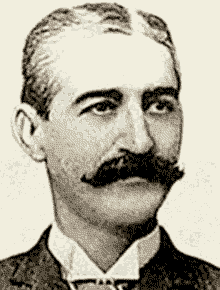
Chief Hennessy
1885 - The Matranga group succeeded in winning contracts to provide dock labor to New Orleans produce-importing companies, including those firms run by Joseph Macheca and his brothers. The stevedore contracts, previously held by the Provenzanos, brought great wealth and influence to the Matranga leadership while depriving the Provenzanos of the same. A bloody feud erupted between the two factions.
1890 - Local Police Chief David Hennessy attempted to mediate the Matranga-Provenzano dispute. He appeared to have the cooperation of Macheca but later learned that Macheca was a partisan of the Matrangas. Hennessy became personally involved in investigating an 1890 ambush of Matranga members by the Provenzanos. He came into possession of information linking Matranga men to crimes in Sicily and sought to establish additional connections through communication with the Italian chief of police in Rome. But chiefs lost their lives within a short time. Hennessy was shot to death on his walk home in the autumn of 1890.
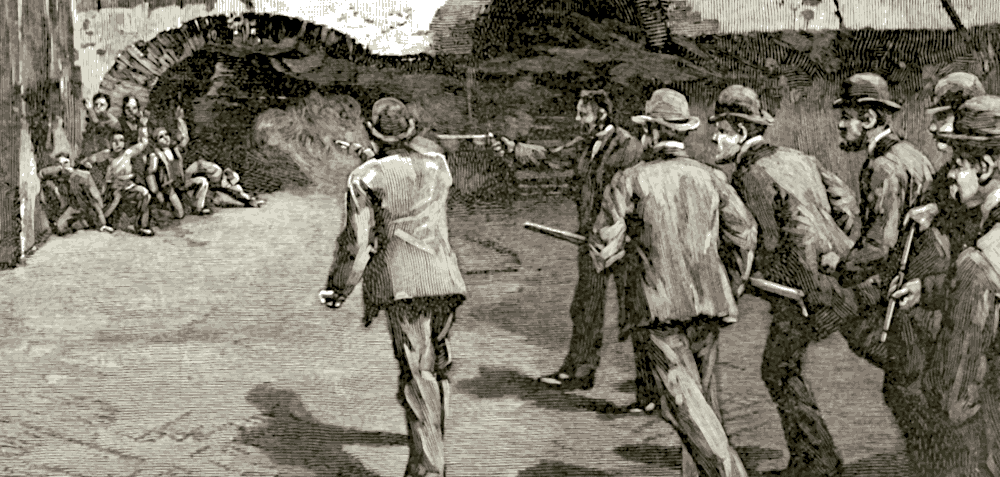
Gunmen fire upon unarmed Italian-American prisoners within Orleans Parish Prison in 1891. (Harpers.)
1891 - Charles Matranga, Joseph Macheca and others were tried for the assassination of Police Chief Hennessy. A jury found none of the defendants guilty, but they remained in custody on a technicality. An angry mob stormed Orleans Parish Prison. A number of inmates, including Macheca, were murdered - shot and hanged - in the largest single lynching incident in American history. Surprisingly, "Millionaire Charlie" Matranga and his chief lieutenant were left unharmed. They emerged from the experience with far greater power.
Writers of Wrongs: "1890: Ambush reignites New Orleans feud"
Writers of Wrongs: "New Orleans police chief ambushed, murdered"
Writers of Wrongs: "Jury complete, 1891 Mafia trial begins"
Writers of Wrongs: "Disturbance at trial of Hennessy assassins"
Writers of Wrongs: "1891 grand jury indicts bribers, defends killers"
Writers of Wrongs: "NOLA mayor to offer apology for 1891 lynchings"
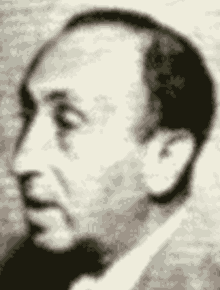
Carolla
1922 - Sylvestro Carollo (June 17, 1896, to July 1970). Charles Matranga reportedly retired from underworld leadership in the early 1920s. "Silver Dollar Sam" Carollo (his surname is also spelled "Carolla") became his successor. Carollo was in and out of jail between 1921, when he spent a year and a day in Atlanta Federal Prison, and 1947.
1930s - Carollo was jailed for narcotics crimes in 1931, for attempted murder in 1933 and again for narcotics in 1936. Each time, he managed to spend far less time in prison than called for in his sentencing. This appears to be evidence of his strong political connections. One example: Carollo's 1933 sentence of eight to fifteen years at hard labor for killing a narcotics agent was cut to a single year through a pardon from Louisiana's governor.
1947 - The U.S. government deported Carollo in spring of 1947, despite efforts of one Louisiana congressman to keep him in the country.
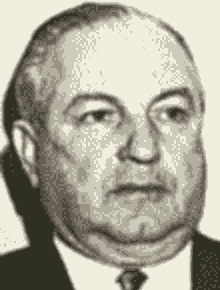
Marcello
1947 - Carlos Marcello (Feb. 6, 1910, to March 3, 1993). Marcello and Carollo were related through the marriage of Carollo's son Anthony and Marcello's niece Maria Zaniatta. Marcello appears to have led the Crescent City's underworld following the deportation of Carollo to Italy. He may have been serving as an acting boss for Carollo during the early years of his term. Carollo did not remain in Italy. He was observed in Mexico in 1949 and was back in Louisiana - residing in Slidell - a year later.
1951 - Carollo was again deported to Italy in 1951, and Marcello reportedly became full boss of the New Orleans Mafia from that time. (Carollo again returned to the U.S. in 1969 and died in New Orleans the following year.) During Marcello's reign, he broke with New Orleans underworld tradition by cooperating with U.S. syndicate leaders from outside Louisiana, like Frank Costello and Meyer Lansky, on Louisiana gambling rackets. Costello partner Phil Kastel also shared underworld interests in Louisiana casinos.
1961 - Marcello's false claim that he was born in Guatemala caused him to be deported there by the Kennedy Administration in 1961. He managed to return to the U.S.
1981 - An extended prison stay for RICO violations did not unseat Marcello from the boss position in New Orleans.
Writers of Wrongs: "Deported to Guatemala due to fake birth record"